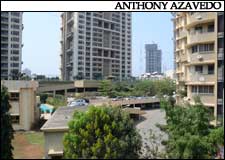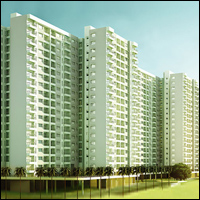Materials and chemicals that support and promote clean and sustainable energy technologies and energy efficiency are on the top of the agenda of stakeholders across the value chain. With buildings representing one of the biggest energy consumers, governments around the world have started focusing more on energy efficient buildings in order to reduce their respective carbon emissions and achieve energy efficiency goals.
According to a recent survey by Frost & Sullivan, the growth of “green” and “net-zero energy” buildings will drive the need for sustainable insulation systems and materials. The massive growth in emerging markets, building renovations in Europe and the evolving standards in the US will be amongst the major driving forces behind the growth of materials for energy efficient buildings.
Urbanisation, coupled with the growing middle class, the increasing number of smart cities enabling efficiency solutions, and smart buildings will particularly drive the construction chemicals market. Even amidst the current mixed global economic landscape, construction chemicals remain at the top of the agenda for emerging as well as developed markets.
 A report on World Green Building Technologies by McGraw Hill Construction quoted Dr. P.C. Jain, Chairman, Indian Green Building Council, as saying that the movement to green buildings had taken hold across stakeholder groups in India. He pointed to 2001 as the launch point for the movement in India. “With a modest beginning of 20,000 sq. ft of green built-up area in the country in the year 2003, today, (there are) over (2,362) registered green building projects with a built-up area of over 1.34 billion sq. ft registered with IGBC,” Dr. Jain said.
A report on World Green Building Technologies by McGraw Hill Construction quoted Dr. P.C. Jain, Chairman, Indian Green Building Council, as saying that the movement to green buildings had taken hold across stakeholder groups in India. He pointed to 2001 as the launch point for the movement in India. “With a modest beginning of 20,000 sq. ft of green built-up area in the country in the year 2003, today, (there are) over (2,362) registered green building projects with a built-up area of over 1.34 billion sq. ft registered with IGBC,” Dr. Jain said.
IGBC has defined a green building as “one which uses less water, optimises energy efficiency, conserves natural resources, generates less waste and provides healthier spaces for occupants, as compared to a conventional building.”
More specifically, escalating investment in the real estate and construction industry, coupled with the growing need to reduce energy consumption across the commercial, residential and government sectors, is propelling the Indian lighting control systems market. Green building projects, in particular, are illuminating avenues for lighting control systems since they have to comply with various national standards set by the Bureau of Energy Efficiency (BEE), Energy Conservation Building Code (ECBC), Green Rating for Integrated Habitat Assessment (GRIHA), and Indian Green Building Council (IGBC) along with international standards such as Leadership in Energy & Environmental Design (LEED).
The potential for lighting controls in green building is huge. It is observed that nearly 1,909 green buildings are registered with IGBC, out of which some 300 green building projects are certified and fully functional in India. It is also observed that there are around 300 projects registered under GRIHA.
“Real estate investors are beginning to realise that even though the construction costs of a green building are higher than those of a conventional building, they can recover the incremental costs within three to four years by incorporating energy saving measures,” said Frost & Sullivan’s Environment & Building Technologies analyst. “The continuing drop in the cost of traditional lighting control products, mainly due to modest innovation, will help this segment expand. Traditional lighting controls are mainly used by medium and small scale stakeholders (typically less than 5,000 sq. metres), while the more expensive automatic controls are mainly deployed by the large users (more than 5,000 sq. metres).”
Technological improvements and rising energy consciousness due to urbanization are bringing in demand from unconventional markets such as healthcare, education and government. Participants are exploring markets beyond the half-penetrated tier I cities and are also undertaking market development activities in tier II cities. “With increasing penetration of information and communication technologies, buildings are expected to become smarter and intelligent. Such fully integrated and networked buildings will need energy management and remote monitoring, leading to improvements in operational efficiency and eventually, more market opportunities for lighting control companies,” the analyst observed.












Did you know that Mr. David Lichtenstein knows the billionaire Ruby Schron? Well he has spent quality time with the most powerful real estate developer in New York city and he says that he is probably one of the kindest persons that he’s ever met. Lichtenstein has even done some business deals with him and he says that he is pleased for meeting with the septuagenarian.